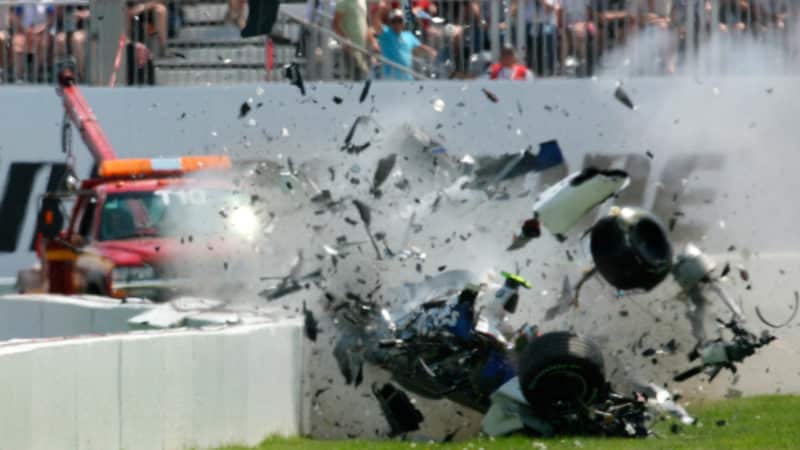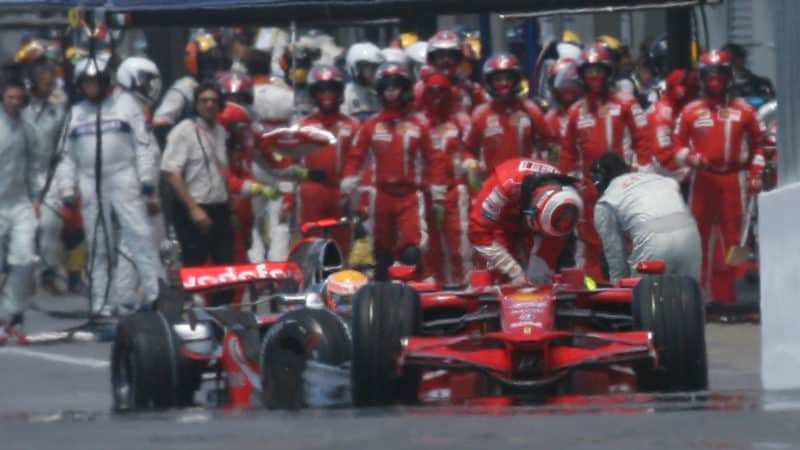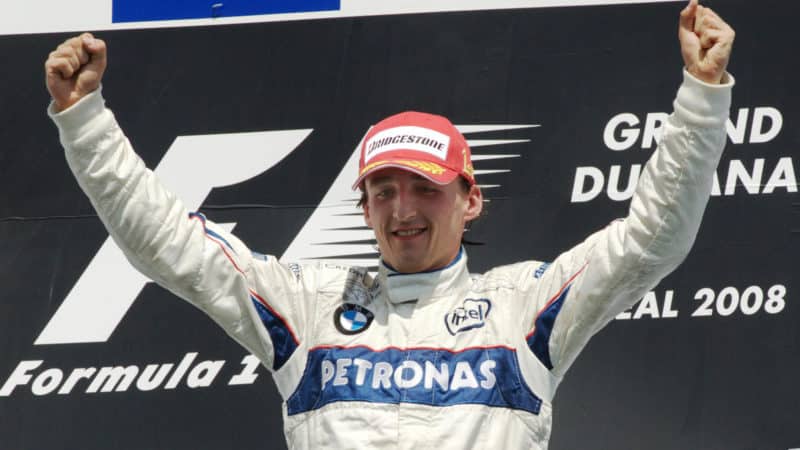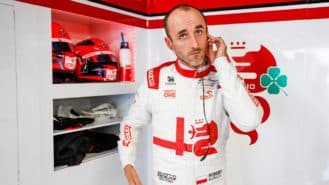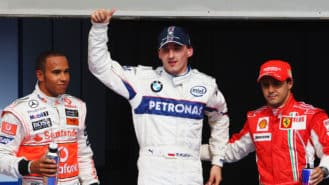And now let’s deal with the disaster – except that, thank god, it was not actually a disaster. I am referring to the Canadian Grand Prix of 2007, the year before Kubica’s Montreal triumph. He qualified his BMW-Sauber eighth – good but not great and well behind his team-mate Nick Heidfeld in P3 – and he was running well enough until, on lap 22, Adrian Sutil crashed his Spyker at Turn 4, prompting a safety car deployment. Four laps later the safety car peeled into the pit lane, and the race was back on. On that same lap, approaching the hairpin, Kubica’s BMW-Sauber clipped Jarno Trulli’s Toyota, which Kubica had been trying to pass, ran wide onto the grass, hit a bump, and was launched airborne with savage force into a concrete wall. The car then ricocheted and barrel-rolled, three of its wheels were ripped from its chassis, its nose cone was torn away, and both its side pods were pulverised. Finally, it came to a rest against a barrier, on its side. Kubica’s feet were clearly visible where the front of his car had been wiped out, and his head was still.
I was a journalist in 2007, having not yet joined McLaren, and I was in the Montreal media centre that day. It was at that time a small and crowded room, usually filled with the noise of scribblers bickering, or laughing, or both. Now it was suddenly silent. We sat and watched the TV monitors, none of us daring to say what we were all privately thinking: was Kubica dead? The medical car arrived. The doctors crouched around the driver, their rushed movements telegraphing their concern. After what seemed like hours but was in fact only minutes, his motionless body was stretchered to an ambulance.
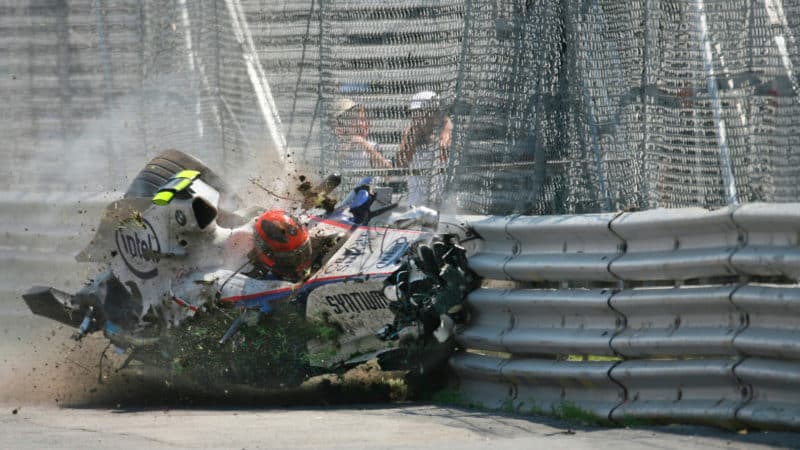
Harrowing sight of Kubica’s crash led many to fear the worst
Grand Prix Photo
Sitting on the row ahead of me was Pino Allievi, the veteran La Gazzetta dello Sport journalist, a man who had counted Enzo Ferrari as a friend. I saw that he was punching a number into his mobile phone. He began to whisper, too quietly for the rest of us to overhear even in the eerie silence that now possessed the room. “I think he’s talking to one of the BMW-Sauber engineers,” someone said.
